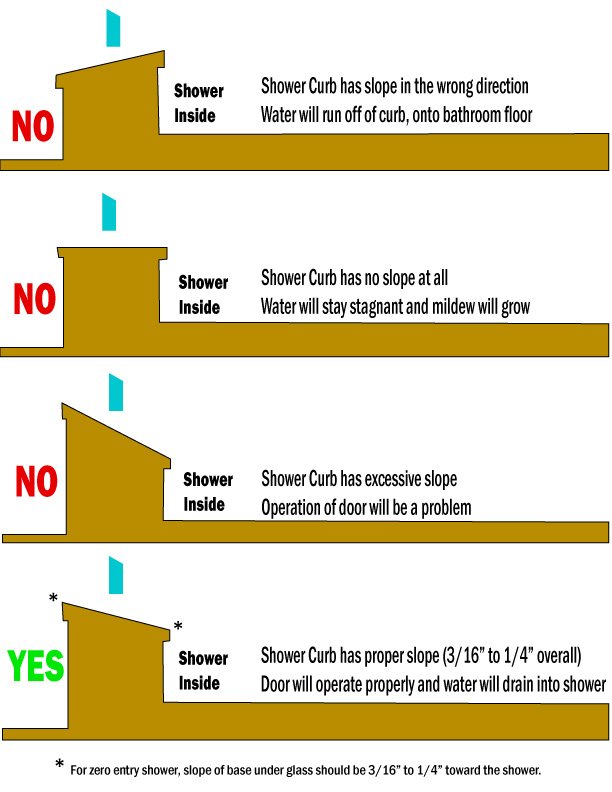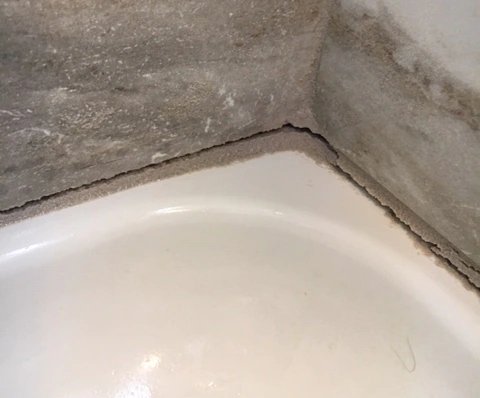Properly Slope the Curb
The slope of the curb in a shower system is by far the most critical area when trying to contain water. Water will sheet down glass panels and doors. When the water hits the curb, the water must quickly flow in the direction of the shower to make way for additional water continuously flowing down the glass. This is true of glass in channel, clips, or track.
Water flowing out of a shower is obviously bad, however, water that sits in flat areas can prove to be an equal or even worse problem since water damage can happen slowly over time. Water in flat areas can both flow in the wrong direction as it builds up, or it may sit for a period of time before it evaporates. This may allow the water to soak into porous grout and eventually wick into shower materials such as surrounding wood and drywall.
Use caulk between base and tile
Grout is meant to seal between two pieces of material that do not move. This is the perfect way to seal between shower tiles. However, grout cannot perform properly where the last row of tiles meets a shower pan or tub surface. While some grouts are more flexible then others, nothing will seal this space better than caulk. While grout can effectively seal a space tiles, only caulk, or similar product, will adhere to two different materials and most importantly, flex when the pan or tub moves.
Cracked grout is one of the most common reasons a shower enclosure will leak. These cracks allow water to get behind tile and shower glass resulting in damage to your home. Always seal the tile to the shower base with the proper material to avoid leaks.



